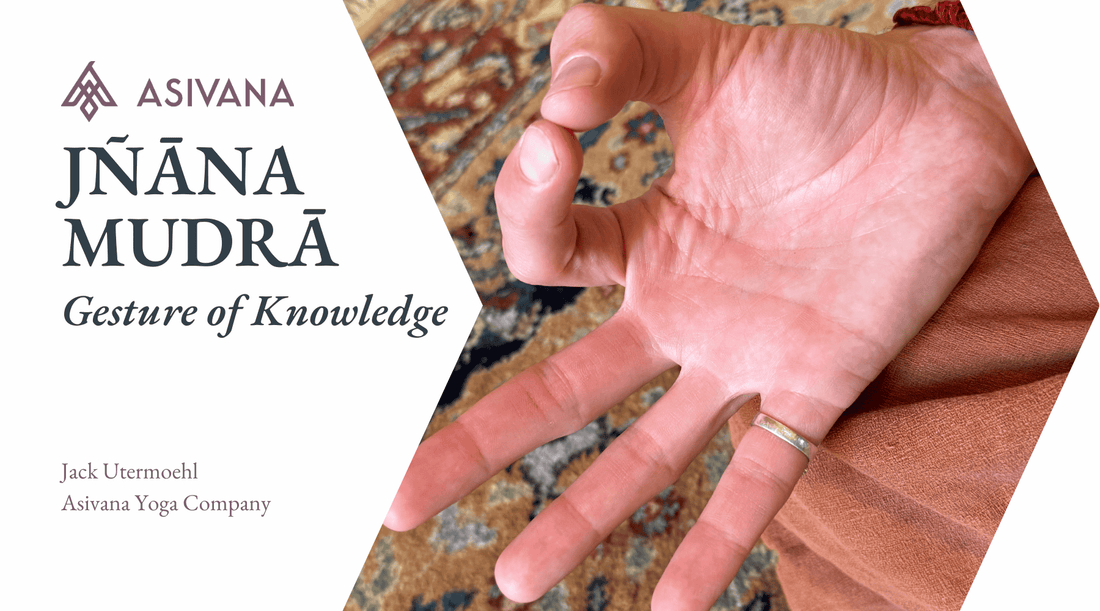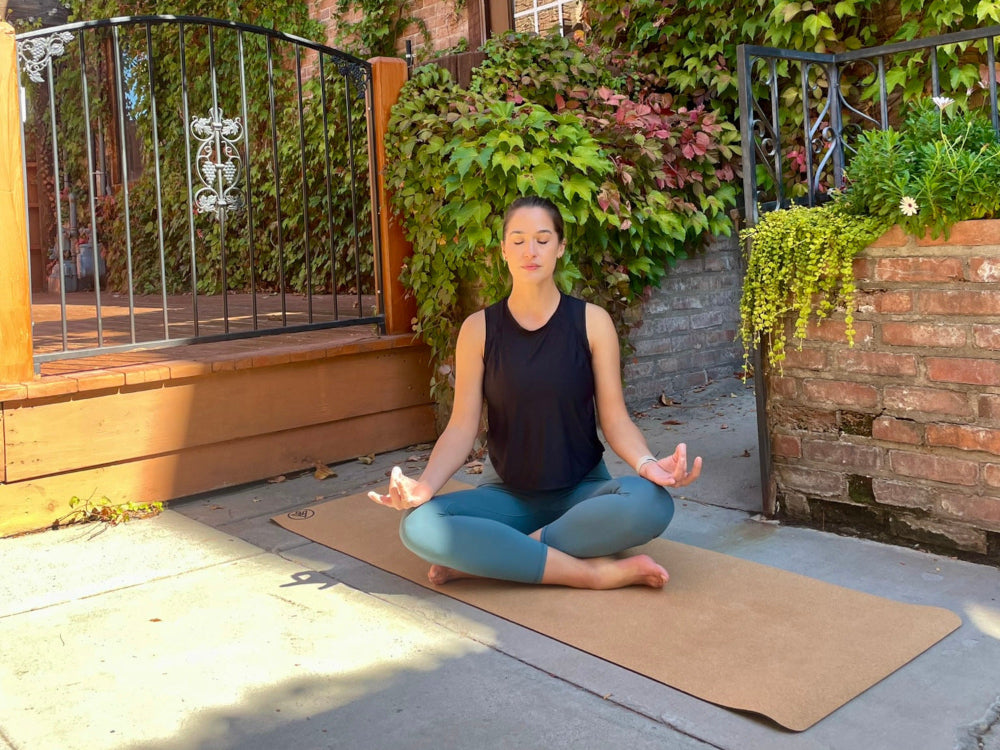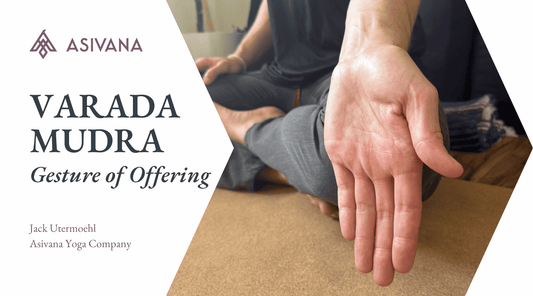
Jnana Mudra - Gesture of Knowledge
Jack UtermoehlShare
Jnana Mudra (Gesture of Knowledge)
Sanskrit Name: Jñāna Mudrā - ज्ञान मुद्रा
English Translation: Gesture of Knowledge
Phonetic Spelling: GYAH-nah Moo-Drah
Jnana mudra, the gesture of knowledge, is one of the most revered hand gestures in yoga and meditation practices. Jnana (knowledge) signifies the wisdom that leads to liberation and self-awareness. By forming a circle between the thumb (symbolizing universal consciousness) and the index finger (representing individual consciousness), this mudra forms the union of these two forces.
It symbolizes the ongoing cycle of knowledge and wisdom that allows the practitioner to transcend ego and experience unity with the universe. Jnana yoga is one of the 4 primary paths of yoga emphasizing the importance bestowed upon this mudra.
Jnana mudra is a tool for cultivating deep mental clarity, sharpening focus, and creating a clear mental state. Practicing this mudra helps direct prana (life force) to the mind, evoking self-awareness, reflection, and inner peace. It’s a powerful gesture to integrate during meditation, pranayama, and even throughout daily life, as it calms the mind and connects one to the higher Self.

Instructions to Perform Jnana Mudra
Sit in a comfortable, seated position with your spine upright. Begin by taking several deep breaths, centering your awareness in the present moment.
Hand Position: Touch the tip of the thumb to the tip of the index finger, forming a circle. Keep the remaining three fingers relaxed and extended. Rest your hands on your knees with the palms facing upward.
Posture: Sit in sukhasana (easy pose) or padmasana (lotus pose) to encourage grounding. If you prefer sitting in a chair, keep your feet flat on the ground, ensuring your spine is straight.
Breathing Technique: Inhale deeply through your nose, drawing breath into the belly.Jnana mudra pairs well with all types of pranayama.
Duration: Practice jnana mudra for 15-30 minutes during meditation or pranayama.
Benefits of Jnana Mudra
Jnana mudra creates mental clarity, self-awareness, and focus. It is a foundational mudra for calming the mind and promoting insight during meditation.
Physical Benefits: Helps reduce tension, calm the nervous system, and promote proper breathing.
Mental Benefits: Enhances mental clarity, focus, and memory, making it an ideal mudra for intellectual tasks and meditation.
Emotional Benefits: Helps reduce stress, calm the mind, and improve emotional balance.
Spiritual Benefits: Encourages spiritual insight, connecting the practitioner to their higher Self and evoking the realization of unity with the universe.
Capture your insights and deepen your connection with our Yoga Journal.Elevate Your Mudra Practice
Symbolism and Meaning of Jnana Mudra
Jnana (knowledge) represents the higher wisdom that transcends ordinary understanding. The connection of the thumb and index finger symbolizes the union between the individual soul and universal consciousness.
The extended three fingers signify the three gunas (qualities of nature) — sattva (balance), rajas (activity), and tamas (inertia) — which are transcended in higher states of awareness.
This mudra creates a deep understanding of self and the universe, making it a powerful tool for meditation and the exploration of one’s inner knowledge.
When to Practice Jnana Mudra
Jnana mudra is ideal for any meditation or pranayama session, as it creates concentration, insight, and mental clarity. It is particularly useful when focusing on intellectual tasks, calming the mind, or seeking a deeper spiritual connection.
Use this mudra during moments of stress, mental fatigue, or confusion to regain focus and balance. A duration of 5-15 minutes is recommended. For meditation and contemplation purposes a duration of 15-30 minutes is recommended.
Contraindications for Jnana Mudra
Jnana mudra is safe for all practitioners and has no specific contraindications.
Additional Insights on Jnana Mudra
Affirmations: "I open myself to the wisdom of the universe." / "I focus with clarity and calm."
Visualization: As you hold jnana mudra, visualize a bright light forming between your thumb and index finger, symbolizing the flow of knowledge and insight. Allow this light to flow, filling your mind with clarity and peace.
Associated Chakras: Jnana mudra primarily activates the Ajna (third eye) chakra, enhancing intuition, wisdom, and insight.
Paired Asanas: Works well with seated postures such as sukhasana (easy pose) or padmasana (lotus pose).
Related Pranayama: Pair jnana mudra with alternate nostril breathing (nadi shodhana) or deep belly breathing to enhance mental clarity and calm.
Meditation Techniques: Jnana mudra is ideal for mindfulness, breath awareness, or meditation focused on self-reflection and higher consciousness.
Variations and Modifications
Alternative Hand Positions: Gyan Mudra
Adaptations for Beginners: Beginners may start by holding jnana mudra for shorter periods, such as 2-5 minutes, and gradually increase the duration.
—— 🕉 ——

Personal Insights
Jnana mudra is the de facto yoga mudra, often mistaken as the yoga hand symbol. And for good reason, jnana mudra is a powerful and easy to form mudra. It connects the egoic concept (as indicated by the index finger) and the consciousness (as indicated by the thumb).
A mudra that transcends spiritual practices, culture, and religions around the world. Jnana mudra is universally recognized as a symbol of spirituality similar to dharmadhatu mudra and anjali mudra.
I often use jnana mudra during meditations of contemplation. With palms facing up, I allow consciousness to expand upward and outward.
This is a more active and energizing mudra than chin mudra. This is a good and safe option for your first mudra meditation!











